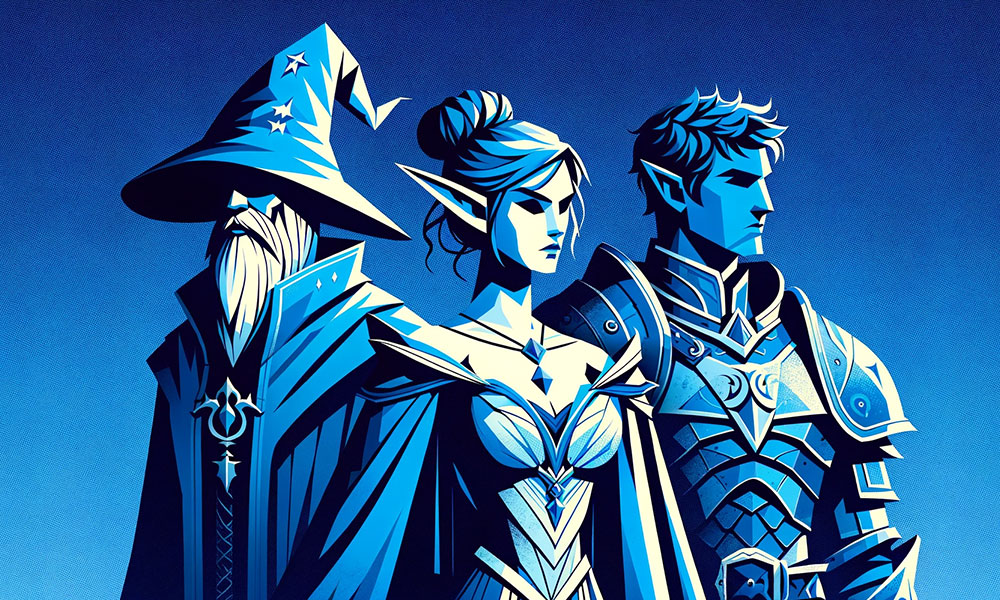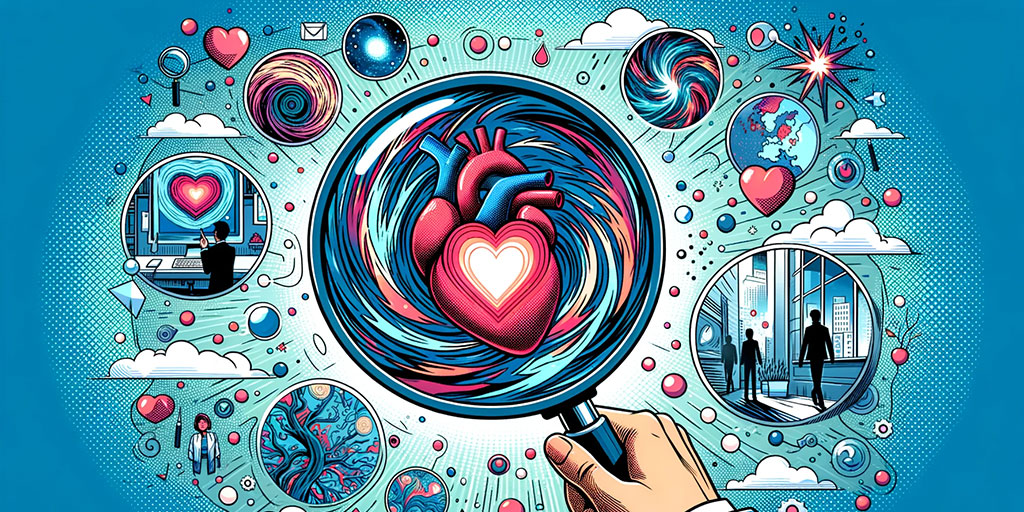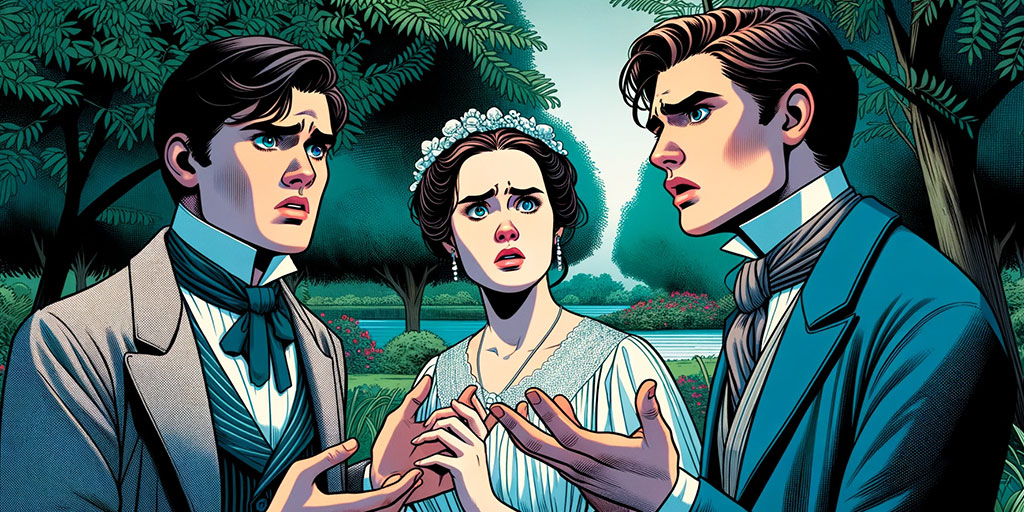Plot-Driven and Character-Driven stories stand as the yin and yang of narrative creation, each with its own distinct appeal. As writers, we often find ourselves caught in the crossfire, pondering which path to follow in our literary endeavors. Should we craft intricate plots that twist and turn like a maze, or should we delve deep into the souls of our characters, exploring their every thought and emotion?
In this guide, you will learn the ins and outs of plot-driven vs character-driven stories as we explore their definitions, illustrate them with examples, and reveal how to write them.
Plot-Driven vs. Character-Driven Stories

Plot-driven stories prioritize the unfolding of events and external conflicts, driving the narrative forward with twists and turns, while character-driven stories place emphasis on the inner growth and development of characters, where their choices and emotions steer the course of the story.
In plot-driven tales, the plot dictates character actions, while in character-driven narratives, characters shape the plot through their desires, flaws, and transformations.
These two storytelling approaches offer distinct experiences, with plot-driven stories often focusing on external excitement and Character-Driven tales delving into the complexities of human nature.
While we should keep in mind that most stories incorporate elements of both plot-driven and character-driven narratives to varying degrees, the differences are summarized in the table below.
Aspect | Plot-Driven Stories | Character-Driven Stories |
|---|---|---|
Narrative drive | Driven by external conflicts and events | Driven by characters’ choices, desires, and flaws |
Focus for readers | Exciting external events, twists, and turns | In-depth exploration of characters’ inner lives and emotions |
Engagement | Thrill, suspense, and action | Emotional depth and empathy |
Pacing | Often fast-paced with frequent plot developments | Can be slower, allowing for deep character introspection |
Character development | Characters may serve the plot, limited character growth | Character growth and evolution are central to the story |
Character arcs | Less focus on individual character arcs | Character arcs and transformations are essential |
Tension source | External conflicts and obstacles | Internal conflicts, desires, and dilemmas |
Author’s challenge | Crafting intricate plots and maintaining momentum | Developing complex, relatable characters and their emotional journeys |
Let’s go beyond this overview and examine each story type in more detail.
Character Development Quiz (Easy)

What is a Plot-Driven Story?

A plot-driven story is a narrative in which the primary focus and driving force of the plot are external events, actions, and the unfolding of a series of connected incidents. In these stories, the plot itself takes precedence over the inner lives and personal growth of the characters, although it should still contain relatable characters.

Here’s a detailed overview of the characteristics of a plot-driven story:
- Focus on External Events: In plot-driven stories, the central emphasis is on the sequence of external events and actions that drive the narrative forward. These events often include conflicts, challenges, obstacles, and twists that engage the reader’s attention.
- Fast-Paced and Action-Oriented: Plot-driven narratives tend to be fast-paced, filled with action, and structured around a series of events that propel the story. These events are often designed to create tension, suspense, and excitement, keeping the reader hooked.
- Resolution is Event-Tied: The resolution or climax typically hinges on the resolution of the central conflict or the outcome of a critical event. The story’s conclusion is often a direct result of the external events that have unfolded.
- Characters Serve the Plot: Characters are often developed and portrayed in ways that serve the needs of the plot. Their actions and decisions are driven by the external conflicts and challenges they face.
- Less Emphasis on Character Depth: While plot-driven stories may include well-defined characters, there is typically less emphasis on exploring their inner thoughts, emotions, and personal growth. Characters may be more archetypal or serve as conduits for the action.
- Focus on External Conflict: The central conflicts are often external in nature, such as battles, chases, puzzles, or quests. These conflicts drive the characters to take action and make decisions.
- Entertainment and Engagement: Plot-driven stories are designed to entertain and engage readers by offering a gripping and eventful narrative. They aim to keep the reader eagerly turning pages to discover what happens next.
Plot-Driven Story Examples
Plot-driven stories are common in several genres that prioritize external conflicts, fast-paced action, and the progression of events, including mysteries, thrillers, adventure stories, action, science fiction, fantasy, spy fiction, war fiction, and historical fiction.
Let’s have a look at two examples of plot-driven classics.
“Gone Girl” by Gillian Flynn

The suspense novel, “Gone Girl”, involves two deeply unlikable and devious characters, Nick and Amy Dunne, whose marriage unravels and whose secrets are revealed through the story.
Nick, an adulterer, arrives home to find Amy missing and the house in disarray. Nick becomes the prime suspect in Amy’s disappearance. But Amy had actually staged her disappearance and tried to frame Nick for the crime. Throughout the story, the two play mind games with each other and try to set each other up for destruction.
The narrative’s central focus is on the unfolding events, twists, and suspenseful plot developments. Readers must piece together the truth from Nick and Amy’s contrasting accounts.
Amy leaves behind a trail of puzzles, clues, and games for Nick to decipher. These elements drive the plot as Nick becomes increasingly involved in solving the mysteries she has set up. The novel is structured in a way that gradually reveals key plot points and character motivations. The deliberate pacing and unveiling of information contribute to the plot-driven nature of the story.
“The Bourne Identity” by Robert Ludlum

“The Bourne Identity” is an espionage thriller in which the protagonist, Jason Bourne, suffers from amnesia and must uncover his true identity while being pursued by intelligence agencies who are trying to kill him.
During the novel, he pieces together fragments of his past, discovers that he possesses exceptional combat and survival skills, and travels through Europe to find people who possess clues to his identity. While solving the problem of his identity, he gets involved in high-stakes action sequences, including car chases, hand-to-hand combat, and intense confrontations with his pursuers.
The narrative’s central focus is on the complex and suspenseful series of events that propel the story forward. The story is filled with action sequences, escapes, and evasions, where the plot is driven by the constant need to stay one step ahead of his pursuers.
While Bourne’s character evolves throughout the story, it is primarily driven by the external events and challenges he faces. His actions and decisions are shaped by the plot’s demands.
What is a Character-Driven Story?

A Character-Driven Story is a narrative in which the primary focus and driving force of the plot are the inner experiences, growth, and development of the characters themselves. In such stories, the central characters’ thoughts, emotions, choices, and relationships take precedence over external events or plot twists, even though external events are present that influence the characters.

Here is a detailed breakdown of what character-driven stories entail:
- Character Focus: In a character-driven story, the characters are at the forefront. Readers are given a deep and intimate insight into the minds, personalities, and motivations of the characters. The narrative often explores their backgrounds, beliefs, desires, fears, and personal histories in detail.
- Emotional Depth: These stories delve deeply into the emotional lives of the characters. Readers become intimately connected to their feelings and experiences, often sharing in their joys, sorrows, and personal struggles.
- Character Arcs: They frequently involve character arcs, which are the personal journeys and transformations of the central characters. Readers witness them evolving, learning, and growing over the course of the narrative. These arcs are central to the story’s progression.
- Conflict of Inner Worlds: The primary conflicts are often internal rather than external. Characters grapple with personal dilemmas, moral choices, inner demons, and the complexities of their relationships. These inner conflicts drive the narrative.
- Slow-Burning Plot: While character-driven stories can have external events and plot developments, they are typically secondary to the characters’ development. The plot tends to unfold at a more leisurely pace, allowing for thorough exploration of the characters’ inner worlds.
- Complex Characters: Characters are multidimensional and complex. They are not easily categorized as purely good or purely evil. Instead, they exhibit a range of virtues, flaws, and contradictions, making them relatable and compelling.
- Themes of Identity and Growth: Themes related to identity, self-discovery, personal growth, and the human condition are often central. These narratives explore what it means to be human and the challenges individuals face in understanding themselves and their place in the world.
- Literary and Psychological Depth: Character-driven stories are often associated with literary fiction because of their focus on character psychology and depth. They require a nuanced understanding of human behavior and emotions.
Character-Driven Story Examples
Character-driven stories are especially common in genres like literary fiction, character studies, drama, coming-of-age, romance, biographies and memoirs, and even in psychological thrillers and historical fiction. Some of the greatest literary classics fit this description, like those described below.
“Atonement” by Ian McEwan

“Atonement” opens in 1935 with the protagonist, Briony, misinterpreting a series of events between her sister, Cecilia, and Robbie, the housekeeper’s son, as a sexual encounter. She accuses Robbie of rape, and he is sentenced to prison.
Much of the rest of the story involves Briony realizing the gravity of her mistake, striving to make amends, and trying to reconcile with Cecilia and Robbie.
The novel dedicates a significant portion of its narrative to delving into the minds and emotions of its characters, particularly Briony, Cecilia, and Robbie. Readers gain a deep understanding of their thoughts, moral dilemmas, guilt, desires, and inner struggles. It also explores the intricate relationships between them.
The primary focus of the story is the development and transformation of its central characters. Briony, in particular, undergoes a profound character arc as she grapples with the guilt and consequences of her false accusation. Her journey from a young, naive girl to a woman seeking atonement is central to the narrative.
“The Secret Life of Bees” by Sue Monk Kidd

“The Secret Life of Bees” is a coming-of-age novel set in the American South during the civil rights movement in the 1960s. Protagonist Lily Owens is a young white girl who feels unloved by her father and carries the emotional scars of a traumatic incident in her childhood when she accidentally killed her mother.
The story starts with her relationship with Rosaleen, the African American woman who serves as both the family’s housekeeper and a mother figure to her. Lily rescues Rosaleen from a racially motivated arrest, and they flee to the home of a trio of African American beekeeping sisters. Lily learns valuable life lessons about love, forgiveness, and the importance of family.
The novel deals with the inner conflicts of its characters, including Lily’s struggle with guilt and the sisters’ struggles with their own pasts and tragedies. The transformation of its central characters plays a big role, particularly Lily. As she navigates a world shaped by racial prejudice and her own past trauma, she undergoes significant personal growth and healing.
How Do I Write a Plot-Driven Story?

Writing a plot-driven story can be an exciting endeavor, but it also requires careful planning and execution to keep the narrative engaging and compelling. Here are some tips and strategies to keep in mind when writing plot-driven stories:
1. Start with a Strong Premise
Begin by developing a strong and intriguing premise or central conflict that will drive the entire story. This should be something that captures readers’ attention and makes them curious to know more. Consider high-stakes scenarios, mysteries, challenges, or conflicts that can sustain interest throughout the narrative.
Look at the following:
- In a small town, a time capsule buried decades ago is accidentally unearthed during construction. Inside, there’s a cryptic message hinting at a hidden treasure. As residents race to decipher the clues, they uncover a web of secrets, rivalries, and unsolved mysteries.
- A brilliant physicist conducts a groundbreaking experiment that unintentionally opens a portal to parallel universes. As the experiment spirals out of control, characters from different dimensions are brought together, each with their own agenda and secrets.
Both will require relatable characters, but characters are barely mentioned in the premises at all. It’s all just conflict, action, excitement, and mystery.
2. Outline Your Plot
Create a detailed plot outline or story structure that maps out the key events, turning points, and plot twists in your story. Having a roadmap will help you stay on track and maintain a sense of direction. Think about the pacing of your plot and where major developments and revelations will occur. This can help you build tension and suspense effectively.
You can pick the story structure that suits you, but the Fichtean Curve and Save the Cat Beat Sheet are well suited to this type of story. The Hero’s Journey is also useful to structure your action-packed story while ensuring that it still contains a compelling character that learns and transforms.
3. Develop Goals and Obstacles
Define clear and compelling goals for your main characters. These goals should be central to the plot and drive their actions throughout the story. Once you’ve done so, introduce significant obstacles, challenges, or antagonists that stand in the way of your characters’ goals. The role of these obstacles is to create tension.
The conflict between your characters’ goals and the obstacles that stand in their way will move your plot forward.
4. Build Suspense and Tension
Use pacing and timing to your advantage. Gradually reveal information, create suspense, and build tension to keep readers engaged. Employ foreshadowing and unexpected plot twists to maintain a sense of intrigue and unpredictability.
Readers of plot-driven stories expect plot movement, which means that your story cannot dwell on character development without moving the story forward.
5. Maintain a Cause-and-Effect Chain
Ensure that the events in your plot are causally connected. Each action and decision made by the characters should have consequences that drive the story forward.
Avoid introducing unrelated or arbitrary plot elements that don’t contribute to the overall narrative, as these will frustrate, confuse, or bore your readers.
6. Tie Up Loose Ends
As your story reaches its conclusion, make sure to tie up loose ends and resolve major conflicts or mysteries. This is a crucial aspect of effective storytelling, particularly in plot-driven stories, as it provides readers with a sense of closure and satisfaction.
Tying up all the loose ends makes the story feel complete, logical, and satisfying. It involves resolving subplots, answering questions, providing character closure, and maintaining coherence within the story.
7. Create Complex Characters
While plot-driven stories prioritize external events, it’s essential to have well-developed characters. Readers should be able to connect with and care about the characters’ journeys, otherwise they might not care about the plot that you have constructed with so much care.
Explore your characters’ motivations, flaws, and internal conflicts, but avoid doing this through long sections of description and explanation. Rather illustrate them through the events in your plot.
How Do I Write a Character-Driven Story?

Writing a character-driven story can be rewarding, but only if you know your characters and are interested in their inner lives, growth, and personal journeys.
Here’s a step-by-step guide on how to write a character-driven story:
1. Create Complex, Relatable Characters
Start by crafting relatable and well-rounded characters with unique personalities, backgrounds, and motivations. Give them strengths, weaknesses, and internal conflicts with which readers can empathize.
Create detailed character profiles that outline their histories, goals, fears, values, and personal challenges. Understanding your characters at a deep level will help you portray them authentically.
Show their personalities and emotions through their reactions to events, instead of just describing them to your readers.
2. Focus on Internal Conflicts
Dive into your characters’ inner worlds. Explore the psychological, emotional, and moral dilemmas that they face within themselves. Character-driven stories thrive on the emotional depth and introspection of the protagonists.
These can involve past traumas, a conflict between desire and duty, an identity crisis, moral choices that challenge their values, guilt, shame, or other strong emotions.
Your character’s internal conflict should be closely tied to their external goals or desires. How they resolve their internal conflict can impact their pursuit of these goals, and vice versa.
3. Define the Central Theme
Identify a central theme or existential question that your characters’ experiences will revolve around. This overarching theme can be a guiding force in shaping their decisions and personal development. The theme is the underlying idea or message that your story conveys, and it often reflects broader human experiences, values, or dilemmas.
Consider universal themes that resonate with readers. These can include themes like love, forgiveness, identity, redemption, the search for meaning, the consequences of choices, or the human capacity for change. Universal themes are timeless and relatable, making them a powerful choice for character-driven stories.
Let the theme guide the development of your characters and the progression of the story. Ensure that character arcs, conflicts, and choices are aligned with the central theme. The theme can serve as a moral compass for your characters, influencing their decisions and actions.
4. Create Compelling Relationships
Develop meaningful relationships between characters. Well-developed relationships can be central to their growth, motivations, and overall journey.
Show how these connections influence their beliefs, behaviors, and personal growth. Conflict, reconciliation, or transformation within these relationships can drive character development.
Develop a variety of relationships, including friendships, family bonds, romantic entanglements, and rivalries. Each type of relationship offers unique dynamics and opportunities for character development.
Consider the compatibility and conflicts that arise within relationships. Some characters may have strong chemistry and shared goals, while others may clash due to differing values or motivations.
5. Establish Character Arcs
Determine what each character wants to achieve or change throughout the story. Develop arcs that show their growth, transformation, or resolution of internal conflicts.
Ensure that character growth and self-discovery are central to your story. They should evolve as a result of their experiences and the challenges they face, leading to a satisfying sense of transformation.
They should be allowed to make mistakes and face the consequences. These errors can lead to valuable lessons and growth, making them more relatable.
6. Balance with Plot Elements
While character-driven stories emphasize internal journeys, you should maintain a balance with engaging plot elements to keep readers interested. The plot should complement and enhance the characters’ experiences, creating a cohesive and engaging narrative.
Think of the plot as a framework that supports and complements the characters’ journeys. The plot provides external challenges and conflicts that force characters to confront their internal struggles.
The plot should present obstacles, dilemmas, and conflicts that challenge the characters’ beliefs, values, and personal development. These challenges should push characters out of their comfort zones.
Frequently Asked Questions

In this section, we will address common queries to help you gain a deeper understanding of character-driven vs plot-driven stories, their differences, and how to navigate them effectively in your writing.
What is the Difference Between Plot-Driven and Character-Driven Stories?
Plot-driven stories are primarily centered around external events, conflicts, and the sequence of actions that move the narrative forward. In contrast, character-driven stories prioritize the inner lives, motivations, and personal growth of the characters as they navigate the plot, with their choices and emotions shaping the story’s direction.
Can a Story Be Both Plot-Driven and Character-Driven?
Yes. A story can indeed be a blend of both plot-driven and character-driven elements. In such narratives, the external events and conflicts provide the overarching structure and momentum, while character development, emotions, and choices significantly influence the direction and impact of the plot. This fusion often results in rich, multifaceted storytelling that resonates deeply with readers.
Do Readers Prefer Plot-Driven or Character-Driven Stories?
Reader preferences vary widely. Some readers gravitate towards plot-driven stories for their fast-paced action and suspense, while others prefer character-driven stories for their emotional depth and relatability. Ultimately, a well-crafted narrative, regardless of its emphasis on plot or character, can find its dedicated audience.
How to Identify if a Story is Plot-Driven or Character-Driven?
Pay attention to the story’s primary emphasis to determine if it is plot-driven or character-driven. Character-driven narratives are more concerned with the inner lives, motives, and personal development of the characters than plot-driven narratives are, with the characters’ decisions and emotions driving the story.
Additionally, consider how the story’s conflicts and resolutions align with either external events or character development to determine its orientation.
How to Develop Deep Characters for a Character-Driven Story?
To develop deep characters for a character-driven story, begin by creating comprehensive character profiles that include their histories, anxieties, goals, and beliefs. Allow characters to have complex inner conflicts and well-defined strengths and weaknesses. Furthermore, ensure that their choices and actions throughout the narrative are informed by their internal struggles and that they undergo significant growth or transformation as the story unfolds.
Final Thoughts
Ultimately, whether you lean towards plot-driven or character-driven storytelling, the key is to recognize that these approaches are not mutually exclusive. The most compelling narratives often find a harmonious balance between external events and internal journeys, offering readers a full spectrum of experiences.
So, as a writer, hone your skills in both realms, and let the story itself guide you in choosing the path that will most effectively transport your readers to the world you’ve created, leaving them deeply moved and captivated by your storytelling prowess.
Character Development Quiz (Hard)








